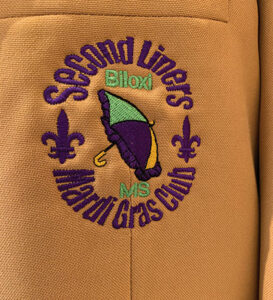By Tammy Smith
Mobile, Alabama, claims to be the first U.S. city to celebrate Mardi Gras. So does New Orleans. Meanwhile, the Mississippi Gulf Coast sits in the middle, not really worried about who was first. It’s all about having fun, no matter what your age.
Mardi Gras first was observed in North America in 1699, when French explorer Pierre LeMoyne D’Iberville (does that name sound familiar?) and his team were camping near a bayou at the mouth of the Mississippi River. Their campsite became known as Bayou de Mardi Gras.
The Coast officially has been observing Mardi Gras for 114 years this year, and during that time, the annual party has grown from something strictly for the locals to a significant part of our tourism industry.
Let’s take a look back at Mardi Gras on the Mississippi Gulf Coast. While this is not intended to be a definitive history, it does give a glimpse of the celebration through the decades.
1908
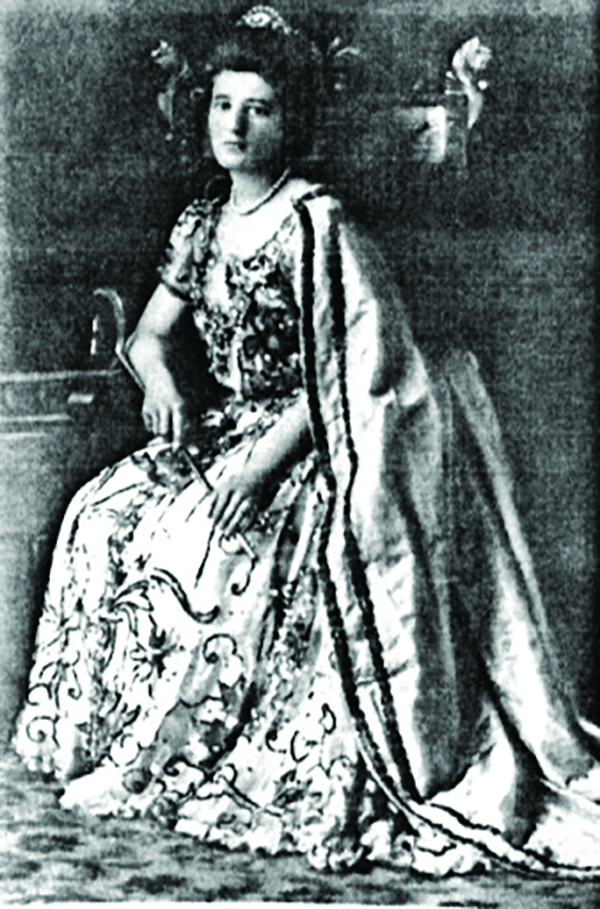
Although records indicate Mardi Gras celebrations were held in the 1880s and 1890s in towns across the Coast, this is the year that Carnival truly starts here, when the first Mardi Gras parade in Biloxi rolls on March 3 with 17 floats, 50 flambeau carriers, a grand marshal, the mayor and councilmembers and the 12-piece Herald Newspaper Band. King Bienville (later King D’Iberville) is John Carraway, and Queen Ixolib (Biloxi spelled backwards) is Blanche Picard.
1910s
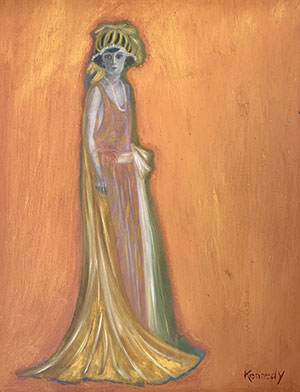
In 1916, The Biloxi Carnival and Literary Association, later to be known as Gulf Coast Carnival Association, is formed. The Pass Christian Carnival Association is founded in 1913. Celebrations become more organized during this decade, but in 1919, the merriment is postponed because of World War I.
1920s
Known as the Jazz Age, the 1920s is a time of celebration, a perfect time for Carnival to flourish. In 1929, more cities along the Coast join Biloxi in the season.
The first female crew, Les Masquees, is formed in Biloxi, and their first ball is held in February 1923.
1930s
The Great Depression has a significant effect on Carnival on the Coast but doesn’t keep people from celebrating. Children’s parades become very popular, including the Junior Carnival parade and the Possum Neck parade.
In the late 1930s to 1948, the Vernon Gilbert Colored Elks Lodge sponsors Biloxi’s African-American King Zulu parades. The African- American Krewe of Foogaboo parades in Pass Christian during this decade.
St. Paul Carnival Association is established in 1930 in Pass Christian to raise funds for St. Joseph School and the Sisters of Mercy who teach there.
Glass bead necklaces become coveted gifts, or throws, at parades. These short-length necklaces are usually handed to the recipient, as the beads can break.
1940s
World War 2 has a major impact on Mardi Gras, with no celebrations from 1942 to 1945.
1950s
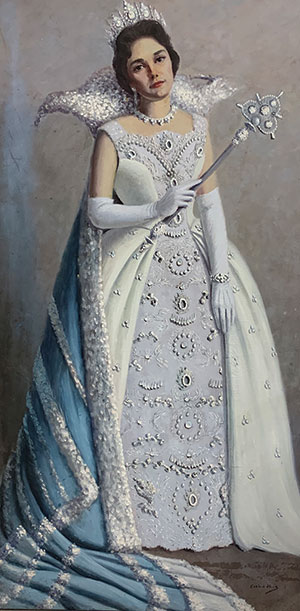
The Korean Conflict causes cities to cancel parades in 1951 and 1952. Later in this decade, costumes and balls gradually become more ornate.
1960s

Traditional glass beads gradually are replaced with plastic versions. The earliest plastic beads mimic the strand length and bead shape of their glass predecessors.
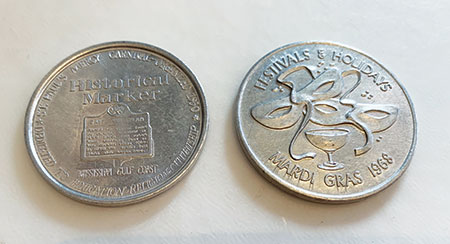
Doubloons debut as throws in New Orleans, and Mississippi Gulf Coast krewes quickly join in adding these commemorative metal “coins” to their offerings.
The all-female Krewe of Nereids is formed in Waveland.
A group of mothers whose children attend St. Thomas Elementary School forms the Long Beach Carnival Association, first known as the St. Thomas Mother’s Club.
The Krewe of Gemini is formed in Gulfport in 1969.
1970s
Parades increase in size, with more floats, bands and other performers adding to the fun.
The first Ocean Springs Elks parade rolls in 1975. The following year, the Jackson County Carnival Association’s first parade is held in Pascagoula.

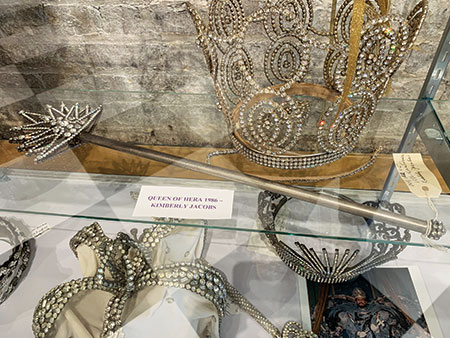
1980s
Medallion beads increase in popularity as float throws.
The Krewe of Real People is founded in 1984 in Bay St. Louis.
The Krewe of Neptune is founded in 1981, with the first ball held in 1982. Their first parade is held in 1983. Floats for this krewe are commissioned in New Orleans and brought to Biloxi.
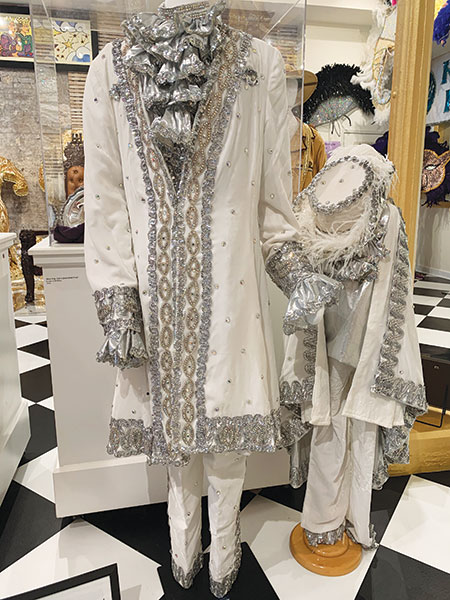
1990s
Throws become bigger and more varied, with plush toys, krewe-specific items and plastic cups adding to spears and small plastic footballs as popular catches.
The Second Liners Mardi Gras Club, Inc., is formed in 1995.
2000 to today
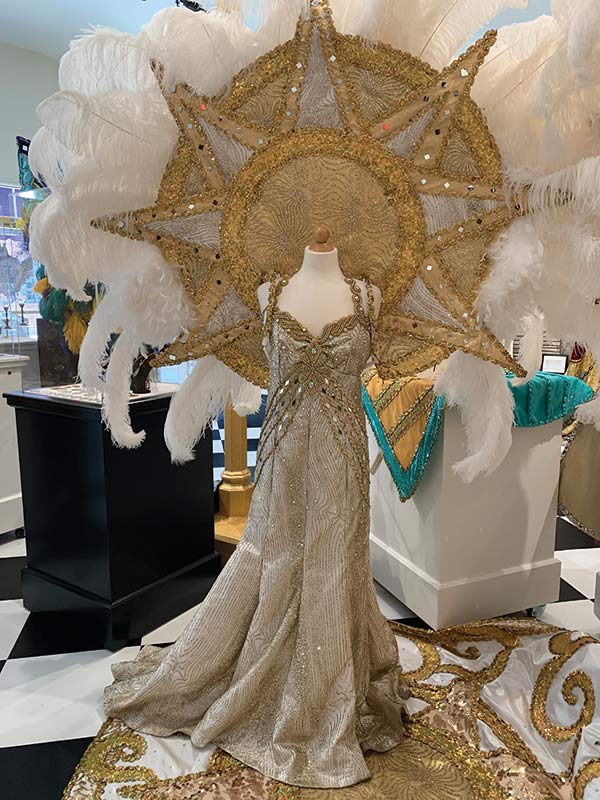
The 2002 Carnival season is held in the shadow of 9/11, as armed soldiers on the streets and helicopters guarded paradegoers. Hurricane Katrina in August 2005 deals a devastating blow to the Mississippi Gulf Coast, but the following year, the parades roll on, with krewes choosing themes that reflect the resiliency of the Coast and its people. And in 2021, the COVID-19 pandemic delayed Mardi Gras celebrations and parades.
This year, the celebrations return, and the Mississippi Gulf Coast is ready. “Laissez les bons temps rouler,” y’all!
WANT TO KNOW MORE?
If you’d like to learn more about Mardi Gras on the Mississippi Gulf Coast, visit the Coastal Mississippi Mardi Gras Museum, 792-A Howard Ave., Biloxi. Hours are 10 a.m. to 4 p.m. Tuesday through Saturday. Phone: (228) 314-4747. Admission is $8 adults, $7 seniors and military, $5 children under 12.


